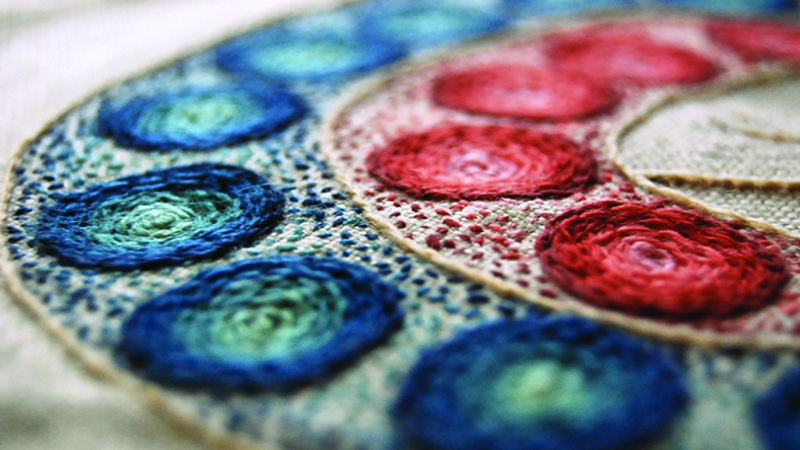The Royal School of Needlework- Week One

As part of the Study Abroad in London, participating students had an opportunity to take classes at the Royal School of Needlework (RSN). RSN is referenced as the International Centre of Excellence for the Art of Hand Embroidery. In the first-week of classes, students learned several basic techniques of crewelwork. The following is a blog by Rachel Coates, a senior in Art + Design.
The first week learning about crewelwork embroidery started with getting acquainted with how to set up a frame in order to begin working on embellishing the piece of linen (used to embroider). ‘Framing up’ took a few hours to accomplish, as each of us had to stretch a piece of linen along a frame in order to keep a good tension while you work on your embroidery piece.
Once frames were set up and linen was attached, we were introduced to the materials we would be using to start our crewelwork. The main material we worked with was Appleton’s wool, and unlike DMC floss, which is commonly used in embroidery such as cross stitch, it is more fragile and can break easily once it begins to wear down from being used. As I have never worked with this type of thread before, it takes some practice to understand how to properly work with the wool, as well as some experimentation to see how the wool could be used in different motifs and the textures it produced on your work.
The first type of stitch we learned for Crewelwork was the lattice stitch, which is a stitch used to create a gridlike pattern on a motif, and each block can have a different type of stitch and color inside to change how the motif will look. After setting down our lattices, we learned some basic stitches that can be used to create a motif, and to fill in the lattice stitch while providing different looks and textures. The stitches we learned this first week were French Knots, Bullion Knots, Pistol Stitches, Chain and Stem Stitches, Buttonhole Stitch, and the Woven and Whipped wheels.
Overall, learning the basics for crewelwork was quite enjoyable, and one of my favorite aspects of it was getting a chance to experiment with color, and color interaction, as well as how the different stitches provide different looks and textures. Learning how to created the wheels was fun, as well as finding different uses for some of the stitches, such as creating leave out of billion knots! Just from this first week of crewelwork, I can not wait to continue practicing these stitches and using the wool threads to create different works and motifs!


